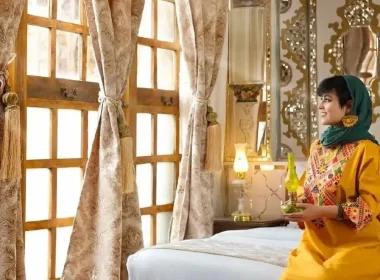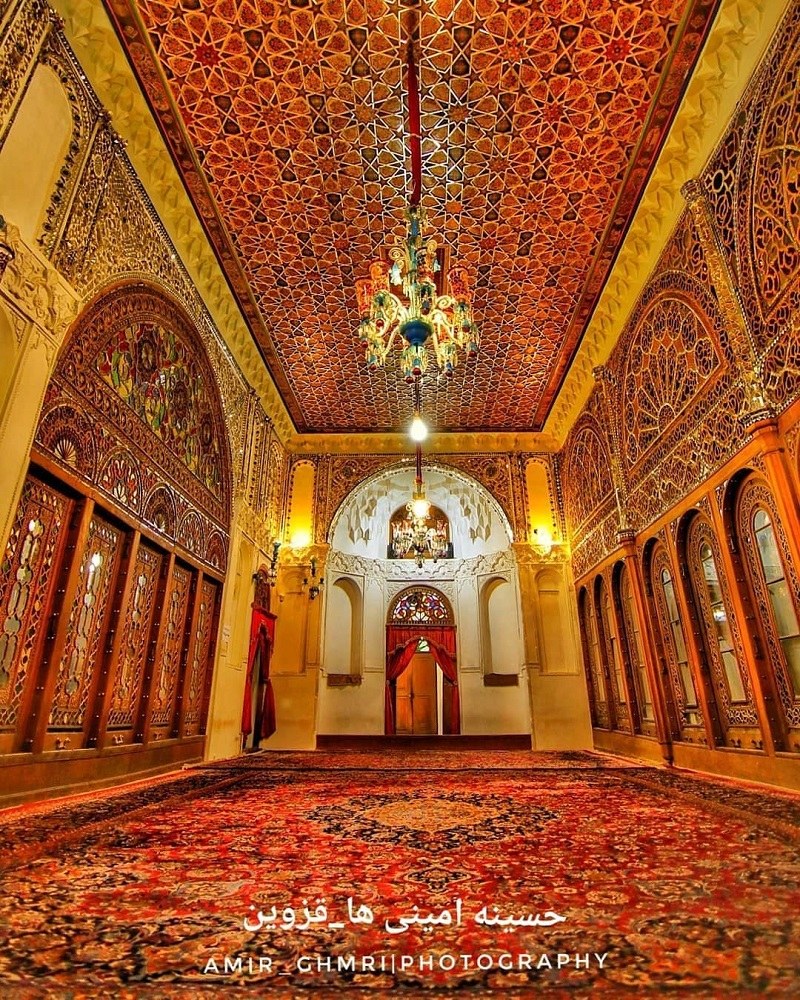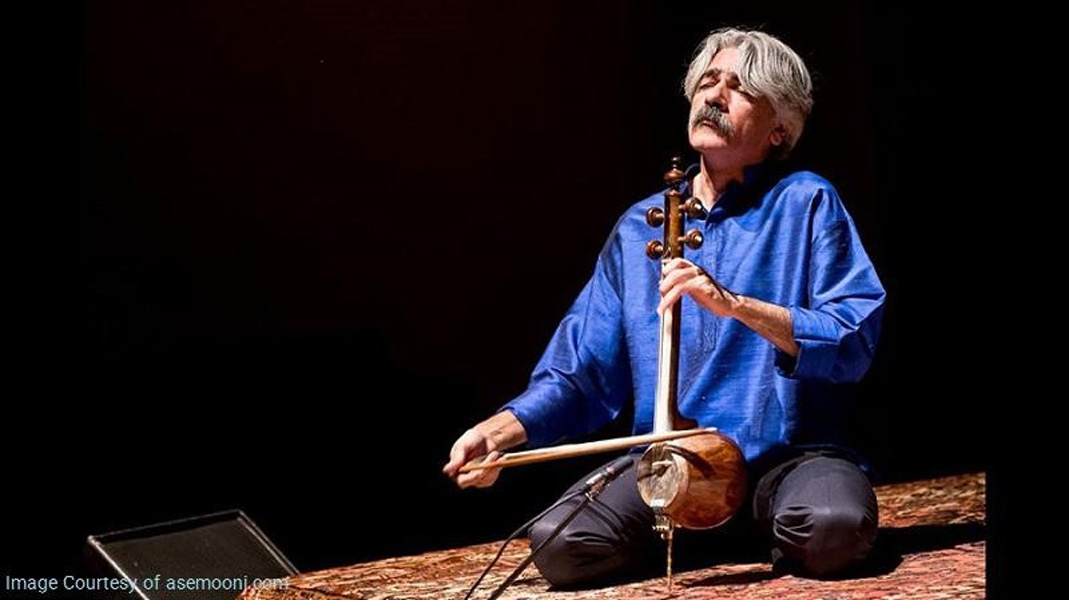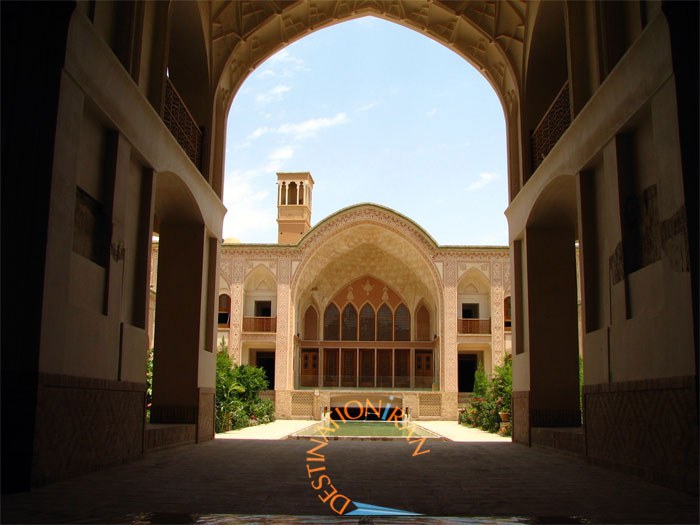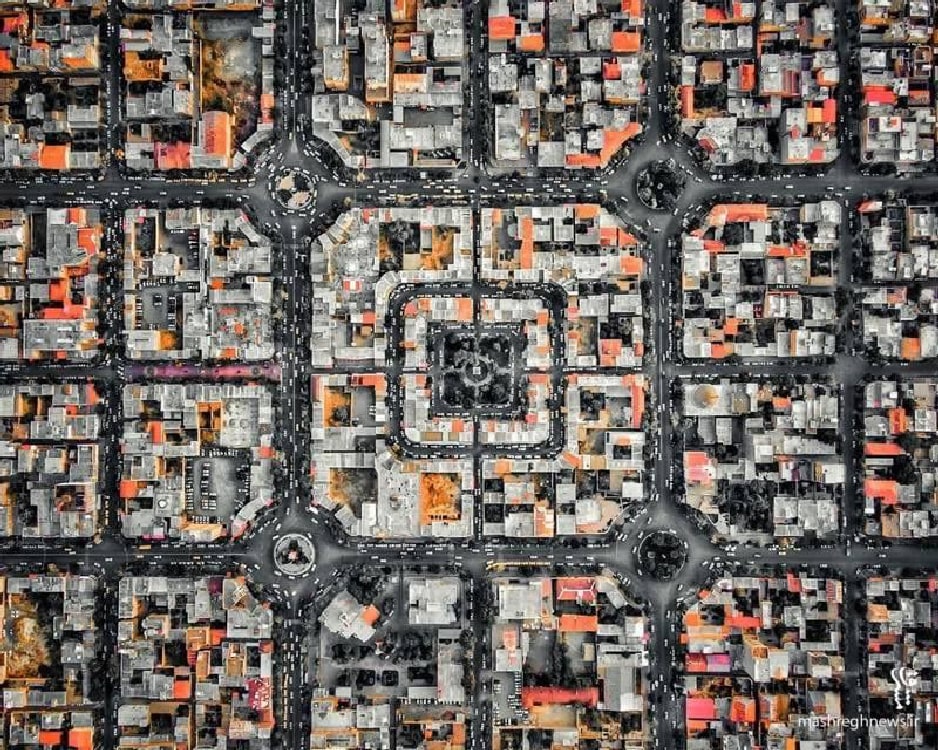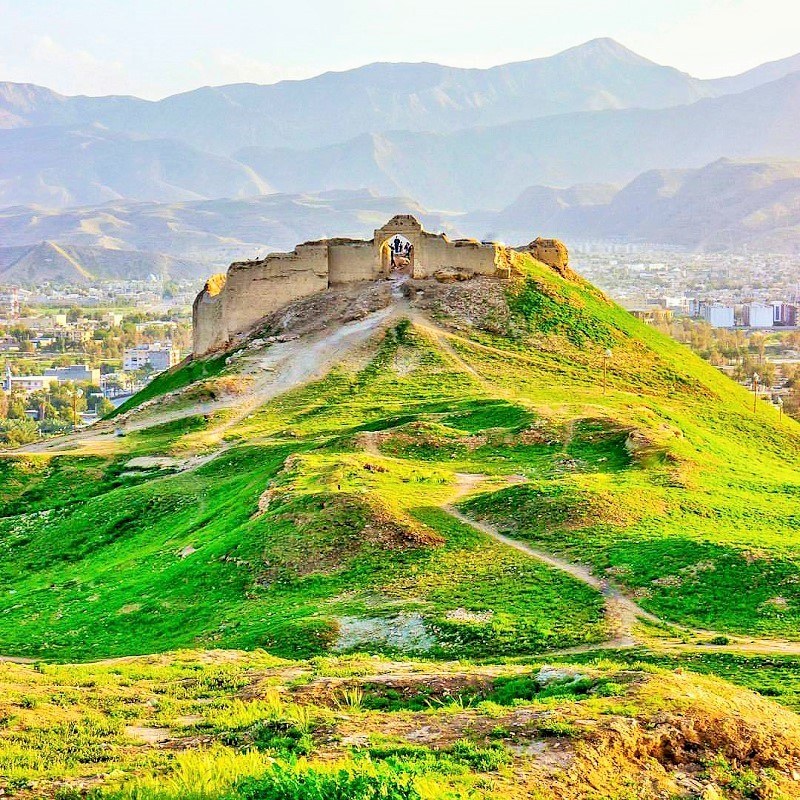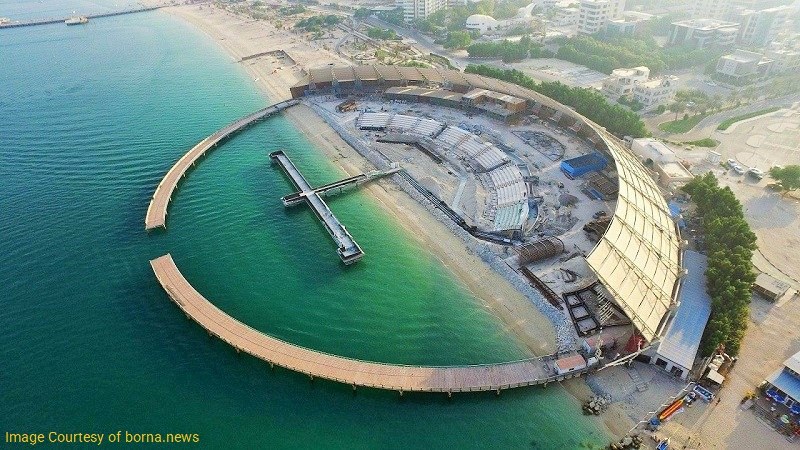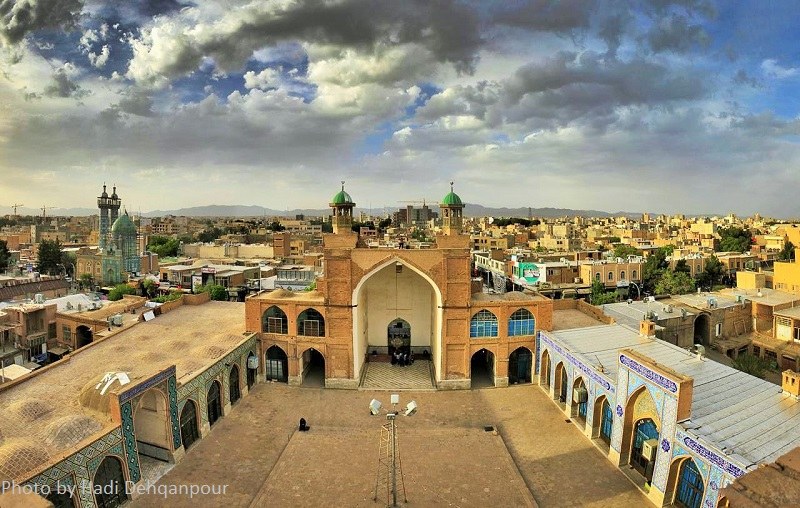
Sabzevar is one of the major populous, academic, cultural, Islamic and historical centers in the northeast of Iran with lots of tourist attractions to visit. This city is a symbol of history and science of Iran. It is the origin city of great scholars in various historical periods. In the past, it was also known as Beyhaq.
Fakhrieh School with 1100 years old is the oldest school in Iran and Pamenar Mosque with a shaken minaret is the oldest mosque in Khorasan. Both of these historical monuments are located in Sabzevar.
Geography of Sabzevar
Sabzevar is one of the major cities of Khorasan Razavi Province, located in the west of Khorasan, northeastern Iran. Sabzevar has a common border with Semnan Province. Furthermore, it gets to Esfarayen and Bojnourd from north and northwest, to Bardaskan from the south, to Neyshabur from the east, and to Shahrud Province from the west.
Sabzevar is between 940 and 977 meters above sea level. The weather of Sabzevar is temperate and dry. The average annual temperature in the city is 17.8ᵒC.
You can enter the city from the southeast, west, and north. It has an international airport that foreign flights are not currently active. There are flights to Tehran five days a week. An air flight from Tehran to Sabzevar takes about an hour.
On the other hand, one of the convenient access ways to the Sabzevar is to use Tehran-Mashhad train. The train stops in a station called Sultan Abad where you should get off and take a taxi to Sabzevar, a short drive of about half an hour. Traveling by train from Tehran to Sabzevar takes about 9-10 hours.
You can also travel to this city in a private car through Tehran-Mashhad highway. The city is about 660 kilometers west of Tehran. Sabzevar is also 235 km east of Mashhad. Therefore, access to Sabzevar from Mashhad by a private car is one of the shortest ways to reach this city.
In addition, you can travel to the city of Sabzevar by bus through the south terminal or the eastern terminal of Tehran. This journey takes about 7 to 8 hours.
Population and Economy of Sabzevar City
According to 2016 Iranian Population and Housing Census, the city of Sabzevar, has a population of 243,700 people.
Sabzevar is famous for its nuts, Persian cumin, cotton, saffron, livestock, and its products. As the market of the western part of Khorasan, Sabzevar is the reference point of business for many of its neighboring cities. It is known as the Khorasan Desert Port.
Sabzevar determines now the global price of Persian cumin. It is the main exporter of cumin, watermelon seed, cotton, dried fruits, wool and coat to the UAE, Saudi Arabia, Iraq, and Kuwait.
History of Sabzevar
After the discovery of ancient handmade tools in this city, archeologists estimated that Sabzevar is 12,000 years old. Archeological studies in the southern parts approve the signs of the Neolithic era without pottery.
Some archaeologists believe that they identified the earliest traces of human tool-making in Southwest Asia in Sabzevar, which is about 1,800,000 years old.
Sabzevar is located next to the Silk Road or Royal Road and on the way toward Buddha Temple. As a result, there are many historical buildings near this city. Archeologists have identified more than 500 monuments from the third millennium BC in Sabzevar.
Sabzevar was an important part of the Parthian government during their ruling era. Since it was on the Silk Road, it had particular importance. The 2500-year-old Keyzaqan plane tree, the oldest living creature in Khorasan, proves the region flourishing in ancient times.
During the rule of the Ilkhanids, Sabzevar was the residence of many philosophers and scholars. In addition, the Shiite government of Sarbedaran chose Sabzevar as their capital.
The Safavid kings developed and revived Sabzevar. Shah Abbas, the Safavid king, built caravansaries and huge water storage facilities inside and outside the city that are now inscribed in Iranian National Heritage list.
This city had the most stable political condition among Iranian cities during the Qajar and Pahlavi era.
Historical Attractions inside the City
Here’s the list of Zabzevar Historical attractions inside the city
The Historic House of Bidkhowri
During the first Pahlavi period, prominent architects from Yazd and Kerman immigrated to Sabzevar. Bidkhowri house, with a great windcatcher, is one of the most prominent heritage of this period.
Mulla Hadi Sabzevari Tomb
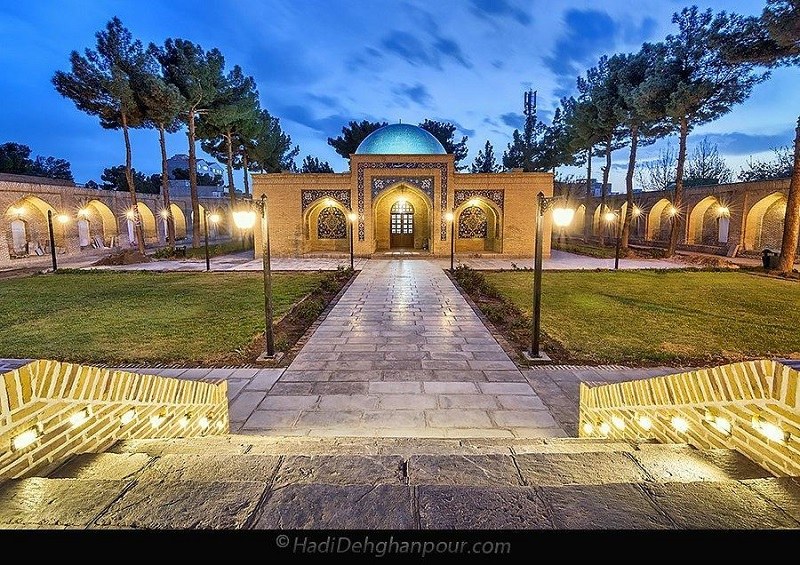
The building of the tomb is located on the southern side of the Kargar Square of Sabzevar. The construction of the original building dates back to 1883. Other changes in the building occurred during the Qajar period.
Marmarzadeh House
This is one of the 11 oldest houses in the city located in Asrar Square. The building originally belonged to a Russian and dates back to the Qajar period. An interesting feature of this building is the two vestibules along the same pathway and the building entry.
Kashefi Mausoleum
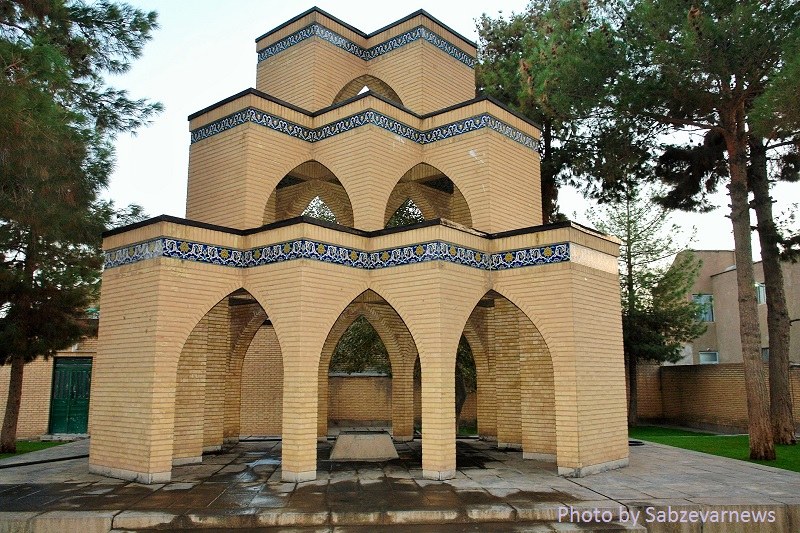
The shrine belongs to Molana Kamal al-Din Kashefi, famous as Va’ez-e Sabzevari (Va’ez means a preacher). The construction of the tomb dates back to 1504 AD (The Timurid Period).
Sabzevar Icehouses
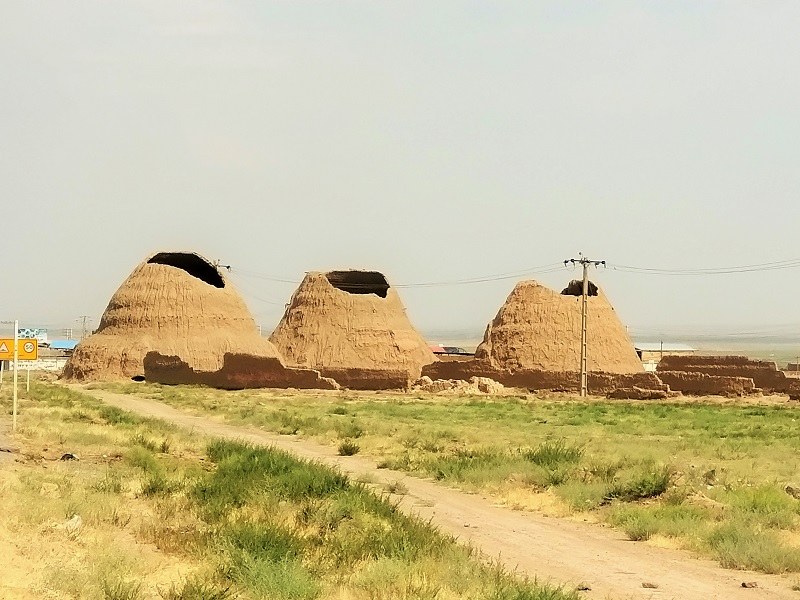
Due to the desert and its very hot summers, which increases the use of cool water, the architects have built many icehouses and water storages in Sabzevar. Currently, nine of them remain entirely on the southern edge of the city.
Imamzadeh Yahya
The shrine of Imamzadeh Yahya is located at the intersection of Beyhaq and Asrar Streets in the city center. The building dates back to the 12th and 13th centuries, and some other parts were integrated to it later.
Pamenar Mosque
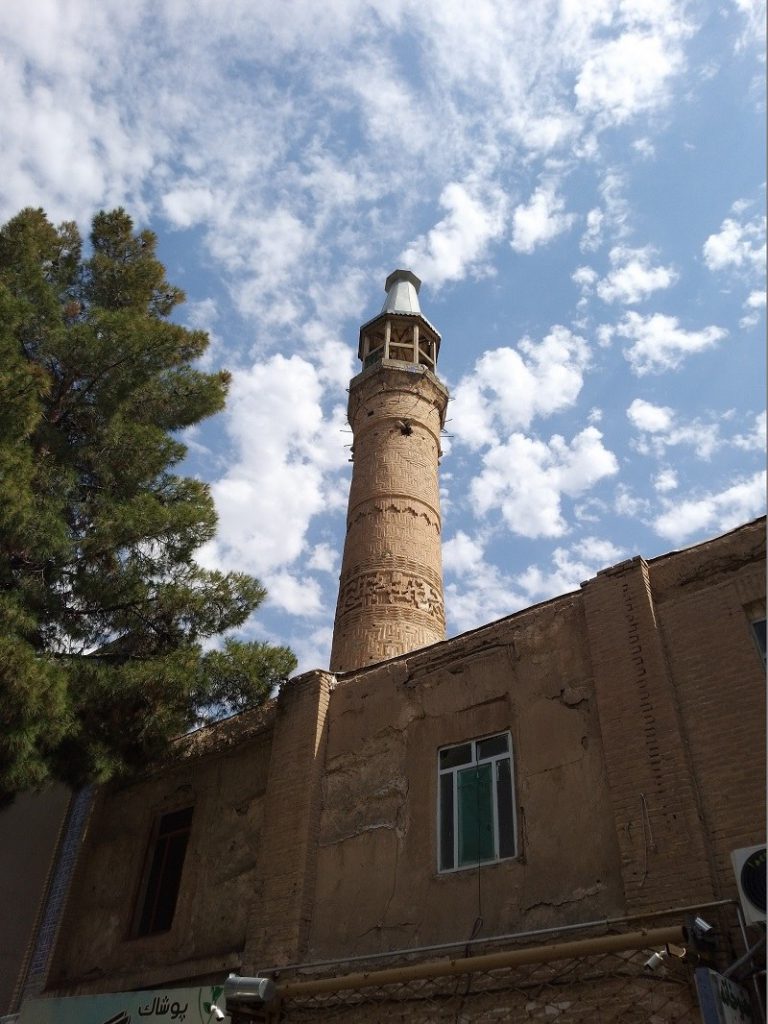
Adineh or Pamenar Mosque is the oldest mosque in Sabzevar. Its initial foundation dates back to the middle of the 9th century. In this mosque, there is a minaret shaking like Menar Jonban of Isfahan the height of which is about 17 meters. The mosque owes its name (Pamenar) to this minaret.
Friday Mosque of Sabzevar
The construction of this mosque dates back to the Sarbedaran era. The stone tablets related to the Safavid era have been installed on the walls. The construction of the mosque occurred in the 13th and 14th centuries. The construction of the facade belongs to the Pahlavi era.
Boqrat Tomb
The tomb belongs to a philosopher of Sabzevar, active in the field of medicine, poetry, philosophy, and mysticism. The construction of the tomb dates back to 1955.
Kian House
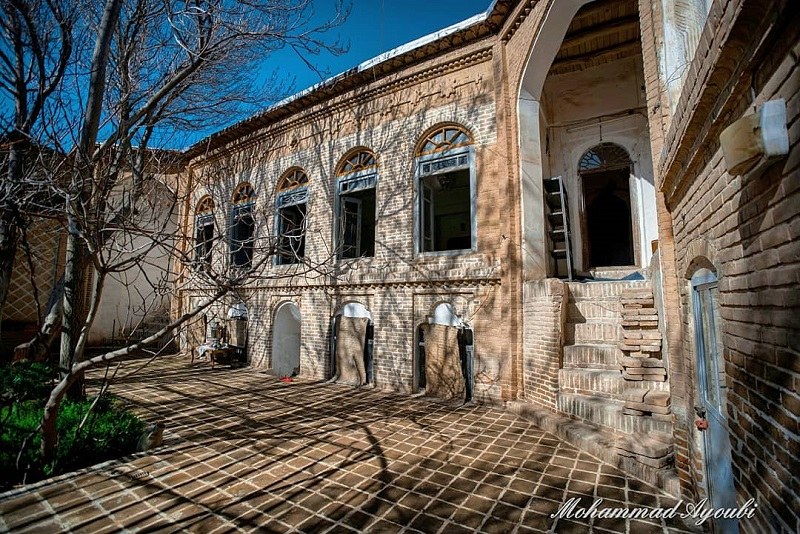
This house was one of the residential areas of Sabzevar city during the Qajar period. The Russians established the first Russian bank of Sabzevar in this home.
Hashtpayeh Howz
The oldest and largest reservoir of Sabzevar is Hashtpayeh Howz (in traditional Persian architecture, it is a centrally positioned symmetrical axis pool) located on Razavi’s crossroad. The name literally means a pool with eight bases.
This howz has a rectangular shape with beautiful arches. The usage of this pool has been changed several times. The construction of Hashtpayeh Howz dates back to Sarbedaran era (mid-14-century).
Qeysarieh Bath
This is a bath of the Qajar era. Qeysarieh Bath is located in Sabzevar, on the northern side of Beyhaq Street, in front of Fakhrieh School.
Fakhrieh School
This school dates back to 1100 years ago and is located in the city of Sabzevar, between the Darvazeh Iraq square and the Beyhaq intersection. Fakhrieh is the oldest school in Iran. It has maintained its original use and is currently one of the most prominent theological seminaries in the city.
Historical Mossalla
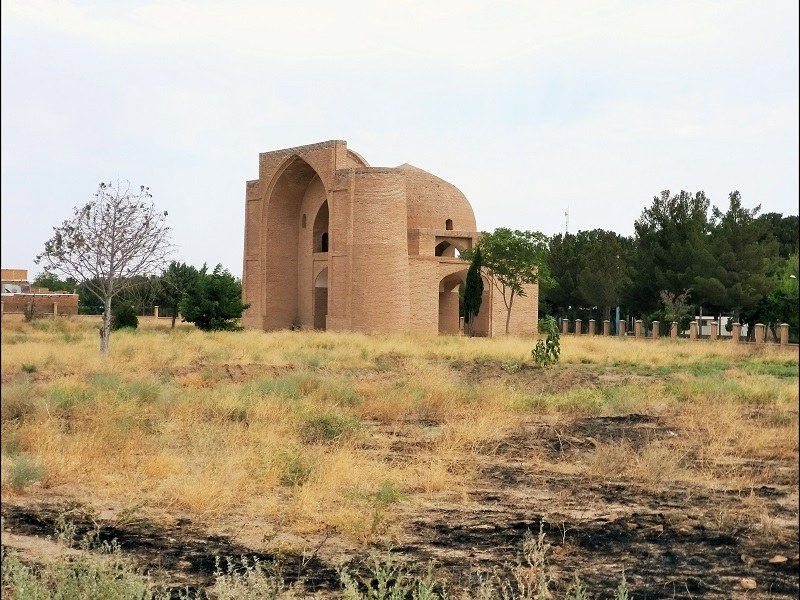
The brick building known as Mossalla (a temple where Muslims pray) is located in the south of Shohada Square in the city of Sabzevar. For many years, this building has hosted many people doing their religious practices such as Friday praying and Islamic festivities. The building dates back to the 14th century, coinciding with the Sarbedaran era.
Sabzevar Petroleum Museum
This museum is located on Dr. Fatemi Street. The museum exhibits some equipment for the storage and transport of petroleum.
Amin ol-Tojjar Mansion
This house is located in Sabzevar on Shahid Nazif Street, near Atash Neshani intersection. This mansion dates back to the Qajar period.
Russian Caravansary or Russian Garrison
This monument is a historic and abandoned building in the center of Sabzevar, on Asad Abadi Avenue, next to the power station. The brick ornaments of this building belong to the Qajar era.
Faramarz Khan Caravansary
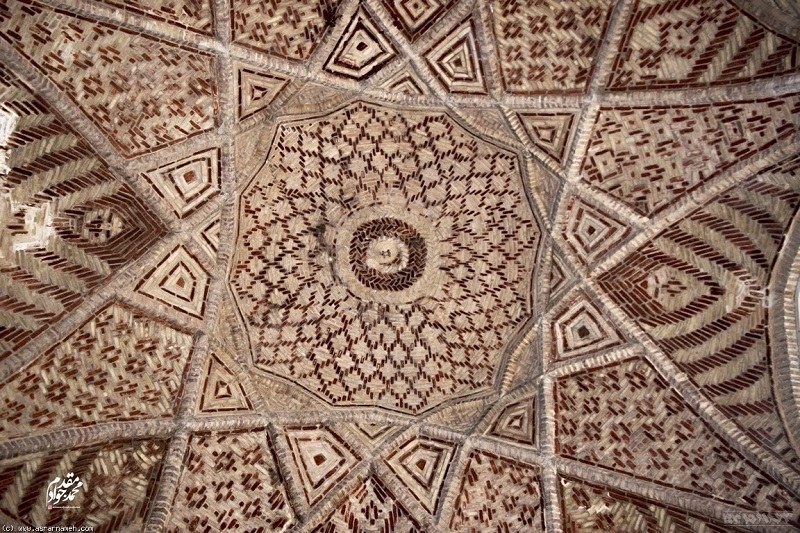
This Caravansary, also called Robat-e Kanoon, is located on the western part of Kargar Square of Sabzevar. This caravansary, built for the use of the pilgrims of Imam Reza shrine along the Khorasan highway, has 4 eyvans.
Museum of Anthropology of Sabzevar
The museum is located in the loading dock and the chambers of Haj Faramarz Khan Caravansary, on the side of East Beyhaq Street. The museum exhibits a part of traditions, customs, occupations and traditional ceremonies of the region.
Historical Attractions outside the City
Here’s a list of Sabzevar historical attractions outside the city:
Menar Mosque
The mosque is located 200 meters from Khosrow Shir Village and one hundred kilometers northwest of Sabzevar. What remains of this mosque is just a part of the southern eyvan that has gypsum ornaments and beautiful inscriptions.
Oskuei Garden House
The garden and mansion called Oskuei are located 4 km west of Sabzevar city and in the village of Abaresh. The total area of this place is 10 hectars and its mansion is among the garden. The mansion dates back to the Qajar period.
Zafaraniyeh Village
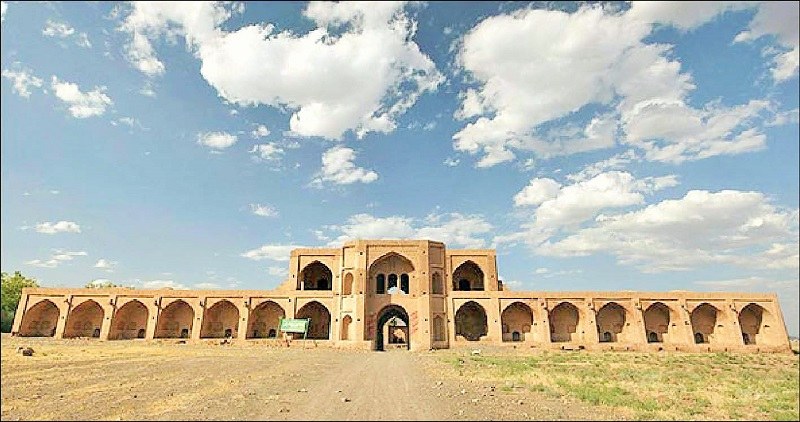
This village is located 35 kilometers east of Sabzevar and on the roadside of Sabzevar-Neyshabur. Its climate is relatively warm in summer and it is cold and dry in the winter. The village dates back at least to over 5 centuries ago. There is a water reservoir, a Shah Abbasi caravansary, an icehouse and an ancient castle in the village.
Khosrogerd Minaret (Khosrogerd Meel)
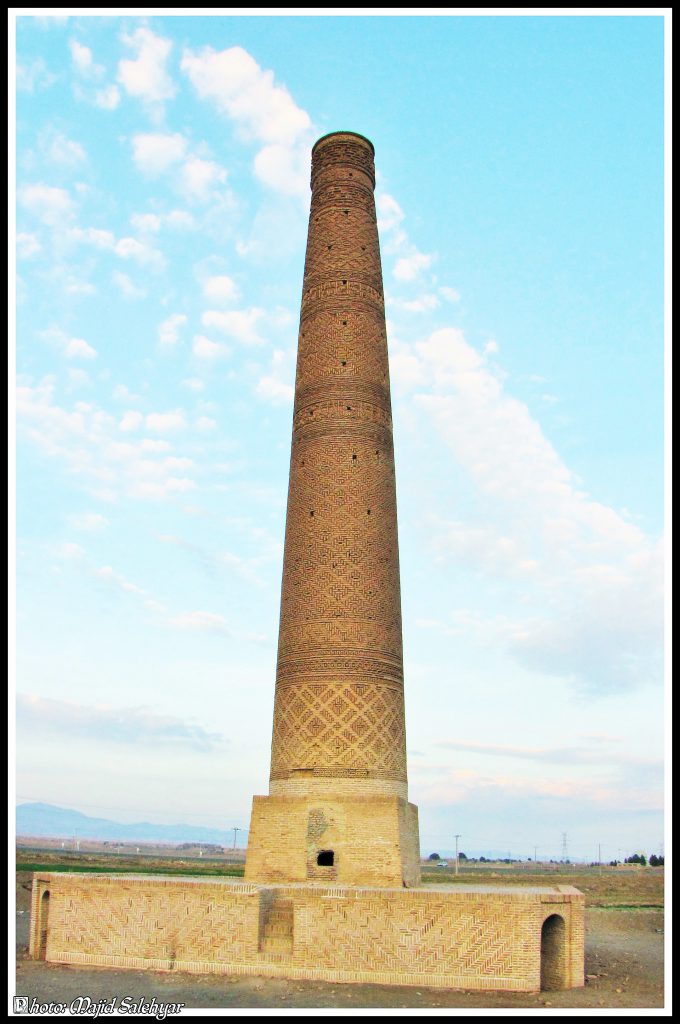
The minaret is located 10 kilometers west of Sabzevar city. The construction of this shaft-like minaret goes back to the 12th century, during the reign of Seljuk dynasty.
Khosrogerd Minaret is a single minaret (without a building next to it) installed for the orientation of caravans along the Silk Road. Like a phare in the sea, Khosrogerd Minaret was a guide for caravans on land.
Aq Qal’e Citadel of Sabzevar
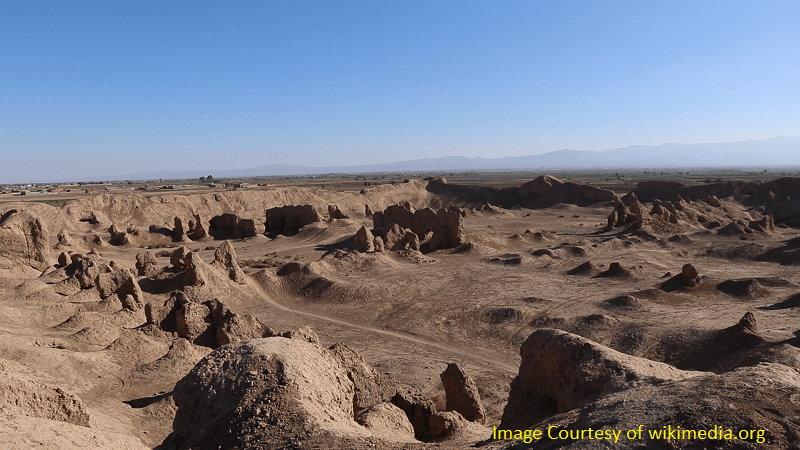
It is one of the historical monuments of the Ilkhanid era, located 80 kilometers northwest of the city. It is a complex consisting of castle and citadel, and the purpose of its construction was to create a city in the style of Soltaniyeh of Zanjan.
Khosrow Shir Mosque
Near Sabzevar, there is a historical mosque survived from the prosperous era of an old and beautiful village. This mosque is located 100 km northwest of Sabzevar city and near the village of Khosrow Shir.
Chahar Taqi of Rivand
In the northern heights of the village of Rivand, 30 kilometers north of Sabzevar, there is a monument left from an architectural complex of the Sassanid era. According to the architectural evidence and archaeological excavations, the building is a fire temple of the time of the Sassanids and almost certainly the famous Azar Burzin-Mehr Fire Temple.
Natural Attractions of Sabzevar
Here’s a list of the beautiful natural spots outside Sabzevar:
Shir Ahmad Wildlife Refuge
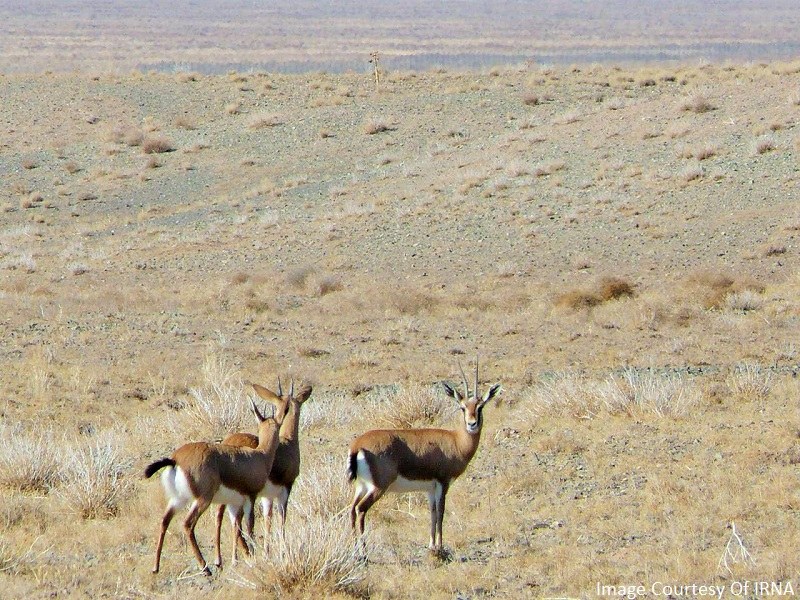
The wildlife refuge is located 7 km southeast of Sabzevar city. The topography of the area is in the form of plains, deserts and Mahur mounds, with a minimum height of 915 meters and a maximum height of 1380 meters. This region has a desert climate with a relatively high-temperature difference between day and night.
Protected Area of Parvand
This area is located 75 km southwest of Sabzevar city and in Rudab district. There are rough country terrains in the nature of this area and the weather is dry. Parvand Region has been recently enlisted as a protected area. It is also one of the best mountainous protected areas in the northeastern desert of Iran.
Barqmad Falls
This waterfall is located 30 km from Sabzevar on Esfarayen Road. Due to the dry nature of the area, this waterfall is famous among the local people and is a good place to relax and escape from extreme heat. The valley leading to the barqmad waterfall is full of beautiful walnut trees.
This waterfall is located 30 km from Sabzevar on Esfarayen Road. Due to the dry nature of the area, this waterfall is famous among the local people and is a good place to relax and escape from extreme heat. The valley leading to the barqmad waterfall is full of beautiful walnut trees.
Keyzaqan Plane Tree
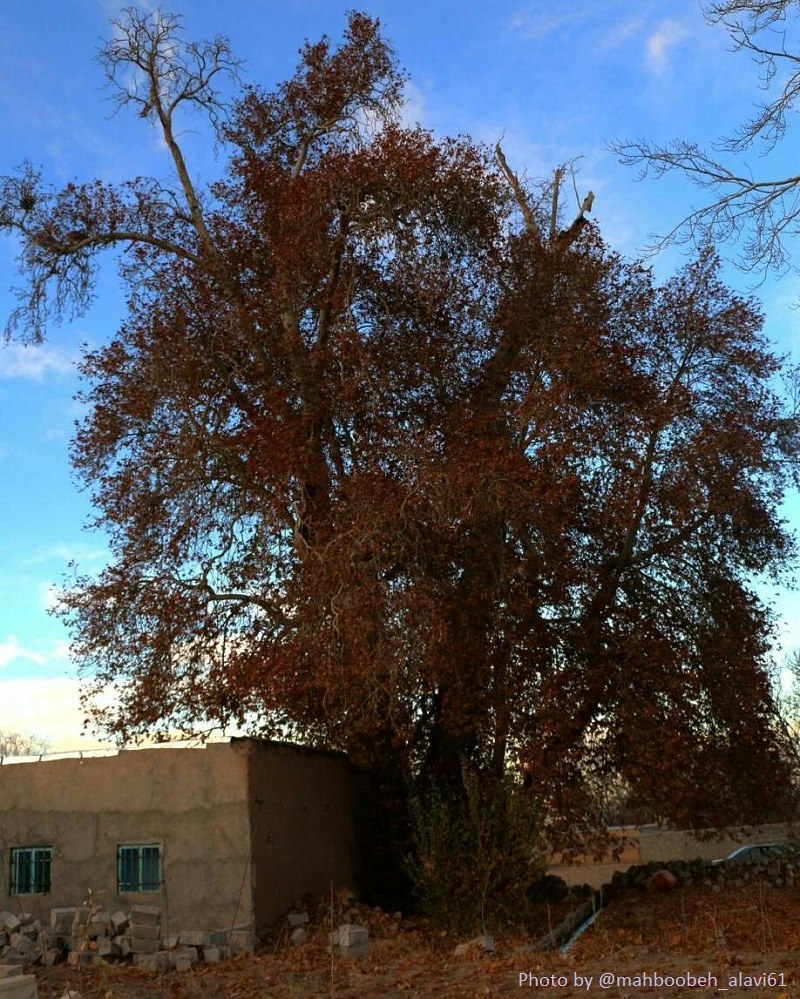
Keyzaqan is a village in the city of Sabzevar. The old plane tree of this village is quite well-known in the region and is 22 meters tall. 2500 years old. The tree is said to be the oldest living creature in Khorasan.



